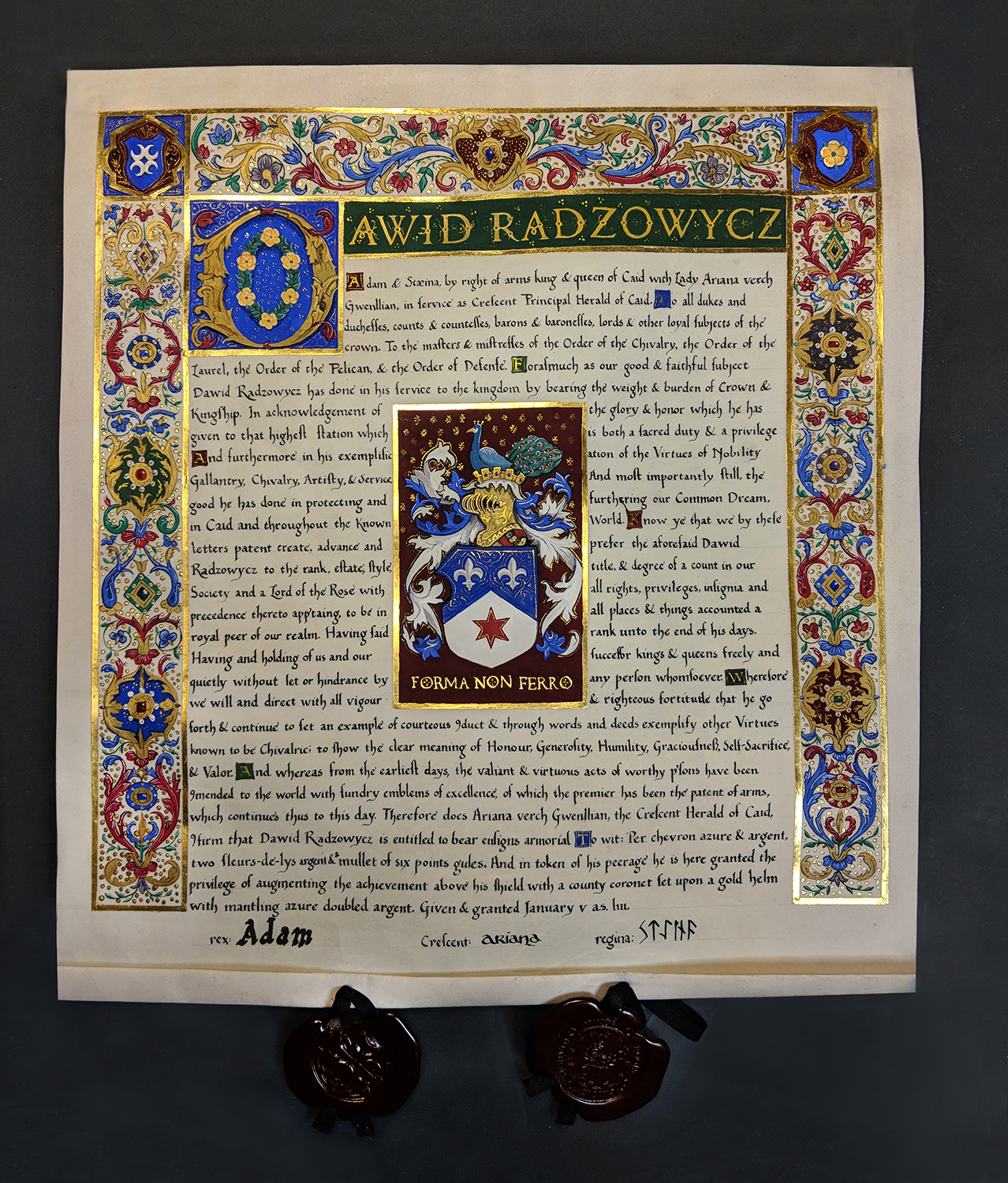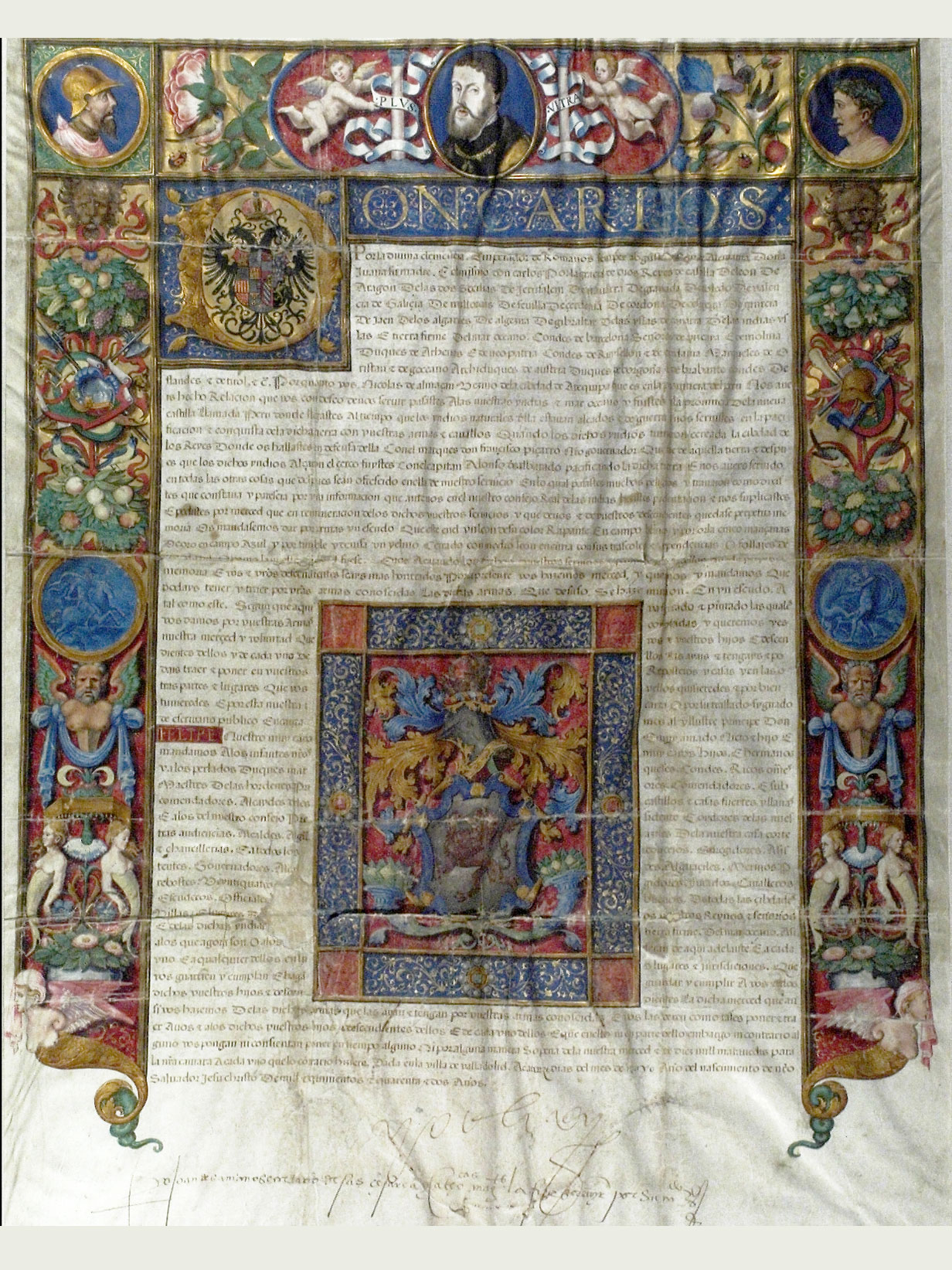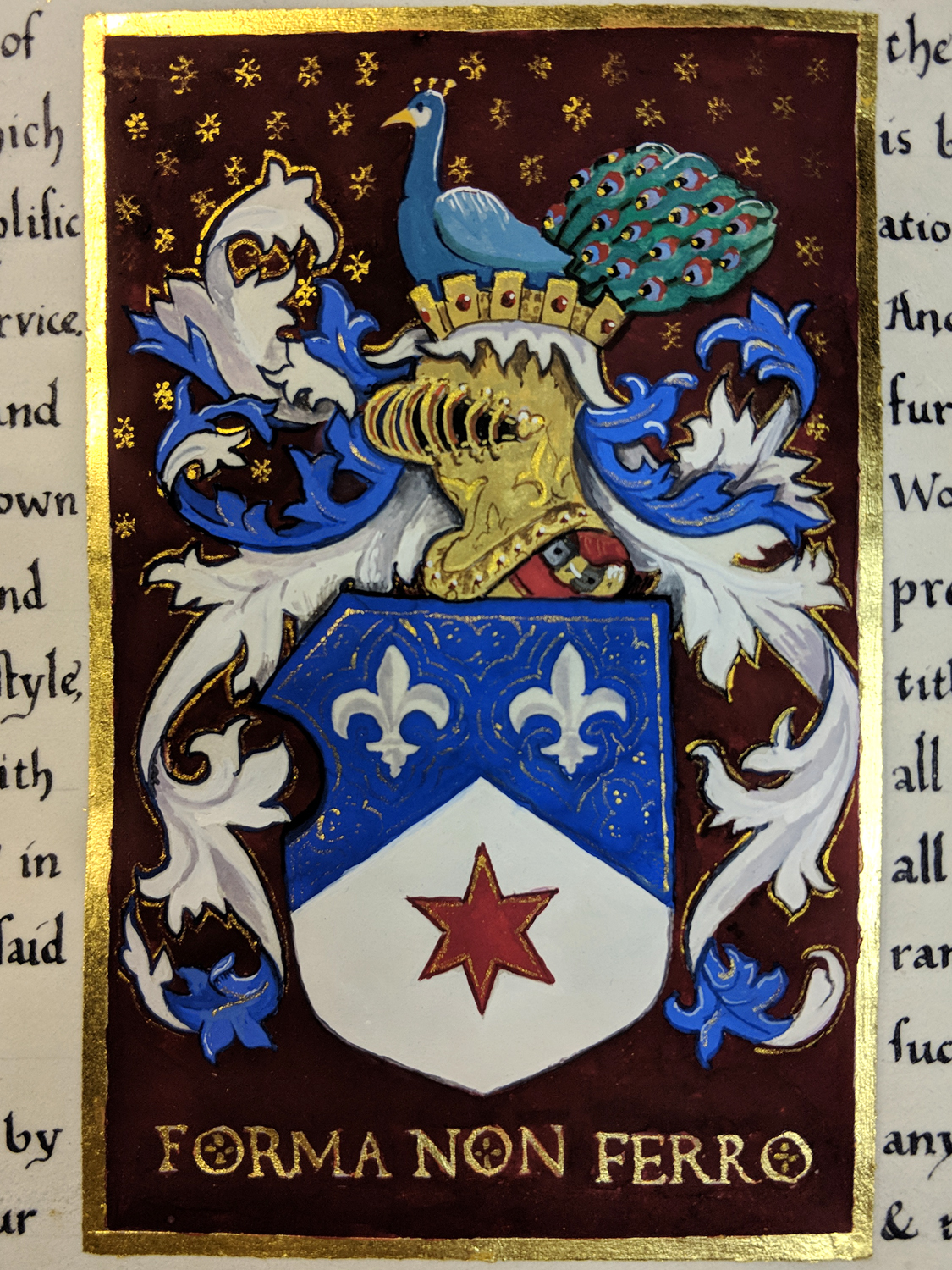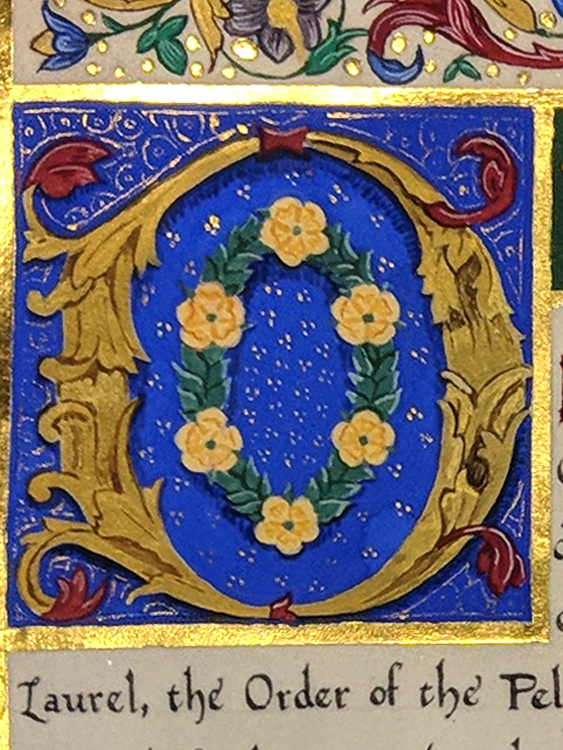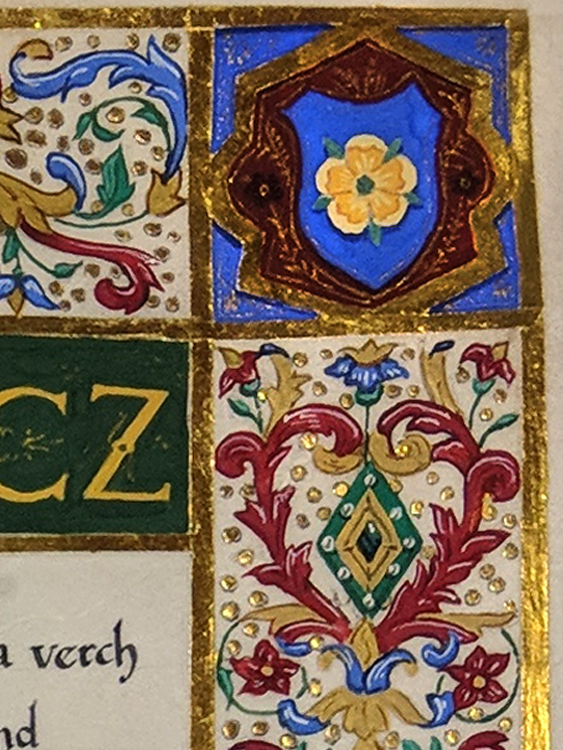County Scroll for Dawid Radzowcyz
I had volunteered as “Court Scribe” for the non-profit living history group I work with. For those of you uninitiated, that means filled out hundreds of award certificates in calligraphy in addition to some formal correspondence between local leadership.
At the time, David Lynch was in charge regionally. In the society he’s Dawid Radzowcyz and his six month reign was some of the best time I’ve had since I joined this group. It was “Extra.” He brought his best to the job and everyone else brought their best as a result. It was a great time to volunteer.
I was pleased to be on his staff, but even more pleased to accept a commission to do this piece for him, presented as he stepped down from the throne.
Gouache on vellum with gold leaf. Calligraphed in iron gall ink. Approximately 14″ x 15.5″ before the addition of the pendant seals
During the 16th and 17th centuries, contracts started to become as much of an art as illuminated bibles had been in the centuries before. These illuminated contracts marked the granting of titles or arms. They could also be marriage contracts or guild charters.
In general, the writing was the art and illumination played second fiddle. In Spain however, a more balanced arrangement was found where text and illumination were both given a showcase.
The piece I created (to the left) has the proportions of a Spanish Grant. That is to say: it’s surrounded on three sides by an equal width border and the arms are displayed in the center of the text. The ornament within those borders is Italian as is the style of the humanist text, but the illumination of the original takes many things from the Italian tradition anyway.
See below a Spanish Grant of Arms from the same period for reference.
Grant of Arms for Nicholas de Almacan of Arequipa.
Granted by Charles V, Holy Roman Empire, 1552
Rauner Library, Special Collections
I approached Nora very early in our reign to commission my County scroll. While I had some ideas about what I wanted, it is almost always my belief that artists should be free to create the art that the circumstance inspires them to create, rather than operate under artificial constraint. As we talked about ideas for the layout, Nora showed me various examples of 16th Century scrolls, and I identified some that I liked. Beyond that, I left the project in her capable hands. When I finally saw the finished result, it brought tears to my eyes. While the layout is beautiful and historically resonant, the execution was beyond my wildest dreams. The intricacy of the border design, the manner in which my arms and achievement were presented, the illuminated initial with its reference to my new members in the Order of the Rose, the calligraphy—any one element alone would have made this a thing of beauty. My scroll, however, has all of these elements, produced with flawless skill and attention to the minutest detail. My scroll is one of my most treasured possessions. I will always remain grateful to Nora for commemorating an eventful time of my life in such an amazing manner.

